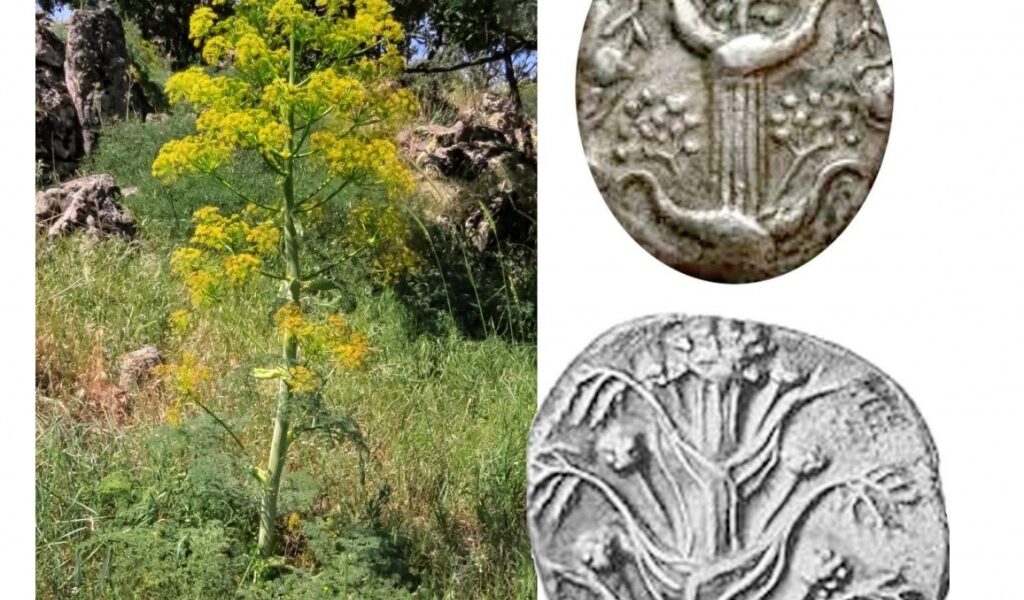Wicked Blue
Wicked Blue's JournalImagine this: What if states tried to ban gun shoppers from using public roads?
After all, Tex-ass is trying to prohibit abortion-seekers from driving on public roads.
It wouldn't work, of course.
Rediscovering the Miracle Plant of Antiquity with Potential Medicinal Properties

A professor has recently uncovered a remarkable botanical survivor, believed to be the same miracle plant once utilized by the ancient Greeks, Egyptians, and Romans. The plant, known as silphion (or silphium) in ancient Greek terminology, was thought to have vanished over two millennia ago. This rediscovery holds the promise of unveiling medicinal properties that have been dormant for centuries.
Historical records reveal that the ancient Greeks ingeniously employed this miracle plant through various processes – crushing, roasting, sautéing, and boiling – to create not only nourishing food but also medicinal concoctions for treating injuries and possibly contraception. Sources suggest that the golden petals and stalk of this plant were incorporated into remedies by the people of ancient Greece, Rome, and Egypt.
***
However, the recent discovery raises uncertainty regarding whether this is indeed the fabled miracle plant of ancient times. Mahmut Miski, a researcher from Istanbul University, postulates that Ferula Drudeana, a similar plant located on Mount Hasan, could be the elusive botanical wonder. Despite being over a thousand miles from its original habitat, the plant bears striking resemblances.
Both the rediscovered plant and depictions in historical botanical texts feature thick stalks and branching roots. Furthermore, both plants exhibit potent medicinal attributes. Ferula Drudeana showcases anticancer compounds akin to those in the original miracle plant. Notably, these plants' habitats align with regions once inhabited by the ancient Greeks.
https://greekcitytimes.com/2023/08/16/rediscovering-the-miracle-plant-of-antiquity-with-potential-medicinal-properties/
Car with giant bull named Howdy Doody crammed into passenger seat pulled over by Nebraska police

Apparently the car didn't have a horn
NBC News
A man driving a full-size bull named Howdy Doody in the passenger seat of his car was pulled over by police in Nebraska on Wednesday after a stunned onlooker reported the odd sight, authorities said.
Officers in Norfolk, about 120 miles northwest of Omaha, were dispatched at 10:05 a.m. CDT answering a call for a "vehicle with a cow inside" rolling through town, police records showed.
Police assumed the bovine passenger would be a small calf, but what they came upon near the corner of West Norfolk Avenue and North 13th Street was a full-size bull riding shotgun in a Ford Crown Victoria.
The car's roof on the passenger side had been removed so the animal could fit.
https://www.nbcnews.com/news/us-news/car-bull-named-howdy-doody-crammed-passenger-seat-pulled-nebraska-poli-rcna102719
Ancient Brick From 2,900 Years Ago Turns Out to Be a DNA Time Capsule
Science Hub

The brick analyzed by the researchers
For the first time, researchers have been able to extract DNA fragments from an ancient clay brick, demonstrating how these building blocks from times long past could be used to catalog flora found in the environment at the time.
When this brick was made some 2,900 years ago in what is now northern Iraq, the process would have involved mixing mud from the banks of the Tigris river, with materials such as chaff, straw, or animal dung.
Small plant particles amid the animal waste and straw can remain protected inside the brick for millennia – as has now been demonstrated by the team from the University of Oxford in the UK and the National Museum of Denmark and the University of Copenhagen in Denmark.
Having extracted a sample of the brick, the researchers used an analytical technique previously used on other forms of porous material, such as bone. This gave them the ability to sequence (or decode) the DNA in the plant matter, identifying 34 distinct taxonomic groups of plants.
https://www.scihb.com/2023/08/ancient-brick-from-2900-years-ago-turns.html
Profile Information
Gender: FemaleHometown: Maryland
Home country: United States
Member since: Tue Aug 11, 2020, 09:58 PM
Number of posts: 5,831







































